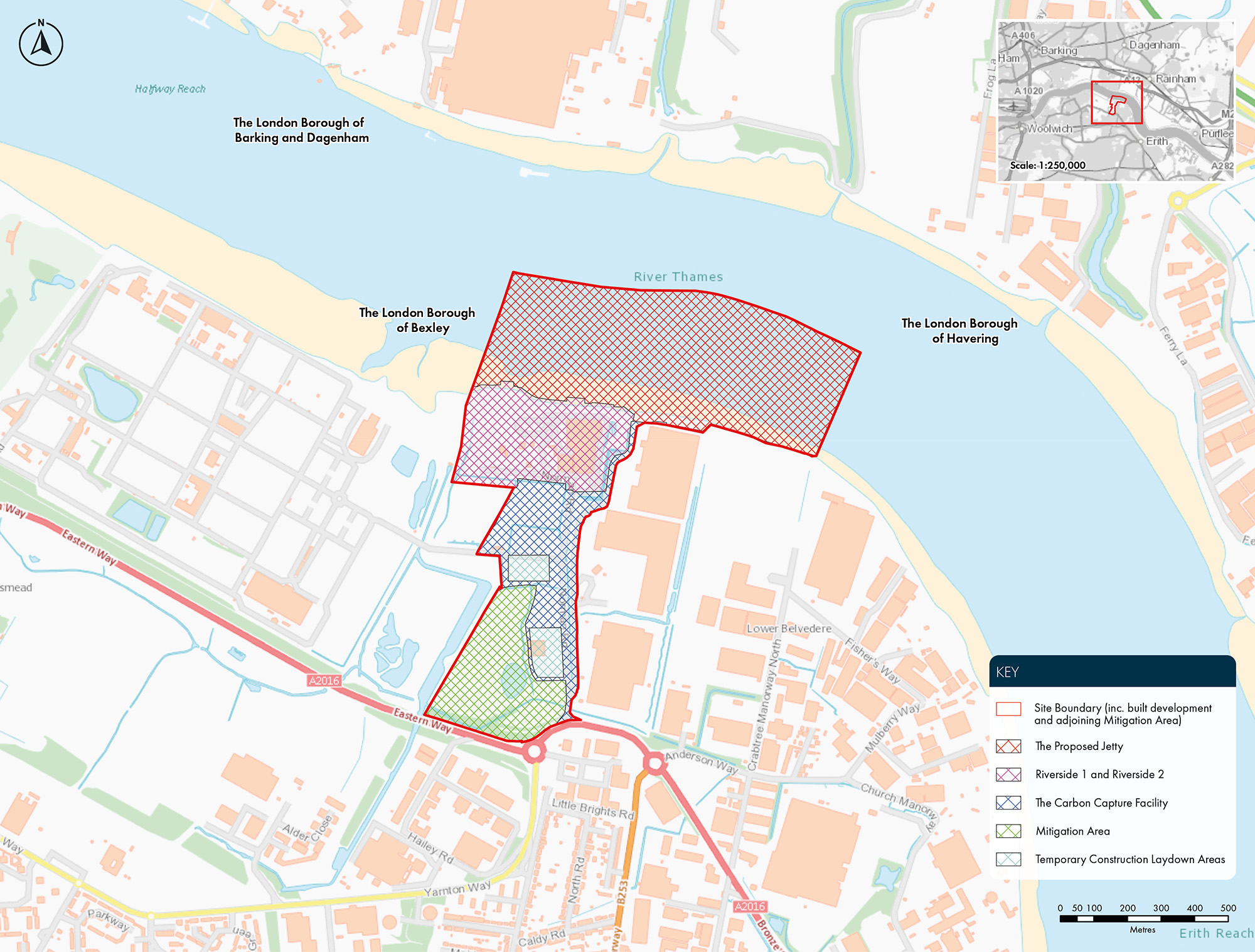Project overview
We’re proposing to install carbon capture technology at Riverside 1 and Riverside 2, our energy from waste facilities used to process non-recyclable waste to produce partially renewable baseload electricity. Once captured, the carbon dioxide (CO2) will be transported by ship along the River Thames to a safe storage site in the North Sea. This has the potential to be the first CO2 shipping project in the UK.
As well as being an important part of reaching our target of being net zero by 2040, the project will also contribute to the UK’s net zero emissions target by delivering negative carbon emissions.
In addition to the planned carbon capture facilities, we’re engaging with key stakeholders such as the Friends of Crossness Nature Reserve, Thames Water and Peabody to improve green spaces in the local area and provide positive outcomes for nature and the local community.
The project would likely comprise two carbon capture plants (one per EfW facility) each with compression, conditioning and liquefaction plants and liquefied CO2 storage tanks. An alternative single carbon capture plant configuration is being considered too. A new export jetty is also proposed, which would allow the captured liquified CO2 to be transported by ship along the River Thames to a safe storage site in the North Sea.
Webinar event
Click the link below to watch the webinar event we hosted on Wednesday 15 November 2023.
Watch hereIndicative site layout plan

Work has been ongoing to consider development area options for the project, with the preferred location at the top of Norman Road, immediately south of Riverside 1 and Riverside 2. This location uses paddocks that form part of the Crossness Nature Reserve and is designated as Metropolitan Open Land. Our project also includes the opportunity to create a net increase to the area covered by the Crossness Nature Reserve. This could see the total area covered by the reserve increase by six hectares – growing from the current 25 hectares to a new total of 31 hectares shown on the green hatched area (above), which will be retained as open green space.
Construction is targeted to begin in 2026, with two programmes being considered; either to build both sets of carbon capture plant at the same time (or in a single plant configuration), or to phase them where two are built. Both Carbon Capture Facilities are intended to be fully operational by 2030. More information can be found in Volume 1, Chapter 2 of the PEIR: Site and Proposed Scheme Description.
Following extensive stakeholder and community engagement, our application for a Development Consent Order (DCO) was accepted for examination by the Planning Inspectorate in April 2024. The examination process closed at 23:59 on 5 May 2025.
The examining authority will now prepare a report on the application along with their recommendation for the Secretary of State to consider. The Secretary of State will then have a further three months to make a decision on whether to grant or refuse development consent.
For the latest updates on the status of our application please click this link to visit the project page on the Planning Inspectorate’s website.
Project timeline
View timelineFull details of the site and proposed scheme description can be found in Volume 1, Chapter 2 of the PEIR
View PEIR documents